DOH Medicaid Update December 2005 Vol. 20, No. 13
Office of Medicaid Management
DOH Medicaid Update
December 2005 Vol. 20, No. 13
State of New York
George E. Pataki, Governor
Department of Health
Antonia C. Novello, M.D., M.P.H., Dr. P.H.
Commissioner
Medicaid Update
is a monthly publication of the
New York State Department of Health,
Office of Medicaid Management
Kathryn Kuhmerker, Deputy Commissioner
Table of Contents
Managed Long Term Care: Pharmacy and Durable Medical Equipment Benefits Change
Mandatory Lead Testing for Children
Providers Who Serve Youth from Birth to Age 21: New EPSDT/CTHP Manual Available
Billing Change for Xolair®(omalizumab)
Depo-Provera and Bone Density: Payment of Bone Density Screening
January 2006 Annual Ambulette Transportation Survey
All Providers: Electronic Funds Transfer Now Available
All Providers: Billing Requirements for Recipients Who Have Other Insurance
Seminar Schedule and Registration
2006 Healthcare Common Procedure Coding System (HCPCS) To Be Released
Onsite Visits for Credential Verification Reviews
Managed Care Plans: Dental Services for Enrollees
New eMedNY Helpdesk Hours of Operation
Provider Services
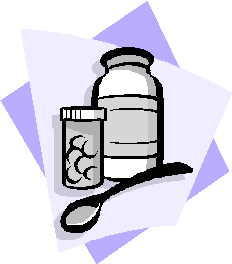
Medicare Part D Prescription Drug Benefit to Start
January 1, 2006
Important Information Regarding Medicaid Recipients
Who are Entitled to Medicare and Medicaid Benefits
Return to Table of Contents
Beginning January 1, 2006, prescription drug benefits for dual eligible recipients (those eligible for Medicare and Medicaid) will be provided by a Medicare approved Prescription Drug Plan (PDP).
Prescription Drug Plan Enrollment
The Centers for Medicare and Medicaid Services (CMS) have assigned dual eligibles to a PDP. If recipients do nothing, they will be automatically enrolled into the assigned plan.
- Dual eligibles can change to a plan that better meets their needs.
- In most cases, if a recipient chooses not to join a Medicare PDP, they may lose all of their Medicaid benefits. Dual eligibles must remain enrolled in a PDP to receive drug benefits and to maintain their Medicaid benefits, including healthcare coverage.
Whether a recipient chooses their own plan or remains in the plan that was assigned by CMS, they will be mailed information from the plan confirming their membership in that prescription drug plan. They must use this information at the pharmacy to receive prescription drugs beginning January 1, 2006.
Pharmacy Benefit under the Medicare Prescription Drug Program
Covered Items under this benefit include:
- Prescription drugs
- Biologicals
- Insulin and insulin related supplies defined as syringes, needles, gauze and swabs
- Certain vaccines
A small co-payment for each prescription will be required. However, if a dual eligible lives in a medical facility, such as a nursing home, a co-payment is not required.
PDP formularies may vary. Medicare can provide assistance in finding a plan that may better meet a dual eligible's needs. For assistance, please contact 1-800-MEDICARE.
Plans are expected to provide a transition supply when the recipient is stabilized on a specific medication.
New York State Medicaid Prescription Wraparound Coverage
If a recipient's Medicare prescription drug plan denies payment for some of their prescriptions, New York's Medicaid may pay for them in some special circumstances.
- The prescribing physician will first have to file an exception request with the recipient's Medicare prescription drug plan to demonstrate medical necessity for this specific drug.
- If this appeal is denied, the prescribing physician can contact the New York State (NYS) Medicare Verification System (MVS) and respond to a short series of questions verifying that an exception was requested and denied by the Medicare plan. An MVS number will be issued.
- To be reimbursed, the MVS number must be submitted by the pharmacy.
- Before NYS Medicaid will consider paying for any prescriptions denied under the Medicare drug benefit, this process must be completed. Medicaid remains the payer of last resort.
Watch for an upcoming Medicaid Update Supplement in December with more information on the new Medicare drug benefit and its impact on the Medicare-Medicaid dual eligible population.
For more information on the Medicare Prescription Drug Program, please contact:
| Medicare | HIICAP (Health Insurance Information Counseling & Assistance Program) |
| (800) Medicare (800-633-4227) | (800) 333-4114 |
| TTY (800-486-2048) | (212) 333-5511 |
| http://www.medicare.gov | http://www.medicare.gov |
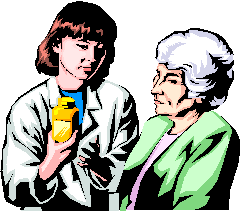
Attention
Pharmacy and
Durable Medical
Equipment
Providers!
MANAGED LONG TERM CARE BENEFITS CHANGE
Pharmacy and Durable Medical Equipment
Return to Table of Contents
Effective January 1, 2006, the Medicaid program will "carve-out" pharmacy services from Managed Long Term Care Plan benefit packages.
As a result, Managed Long Term Care Plans will no longer cover these services.
- Managed Long Term Care members will obtain their pharmacy services through their Medicare Prescription Drug Plan or fee-for-service Medicaid. Information on billing for these services will be sent to you in a special edition of the Medicaid Update.
- Program of All Inclusive Care for the Elderly (PACE) participants will continue to receive prescription drug coverage from their PACE organization.
| MANAGED LONG TERM PLANS AFFECTED BY THIS CHANGE | |
|---|---|
| Plan Name | Plan Code |
| CarePlus Connections | KX |
| Co-Op Care Plan | AN |
| Elant Choice | M3 |
| GuildNet | GN |
| Health Partners of NY | LE |
| HomeFirst Inc. | AW |
| Independence Care System | IX |
| Partners In Community Care | GD |
| Senior Health Partners | H1 |
| Senior Network Health | MZ |
| Total Aging In Place Program | N6 |
| VNS CHOICE | VC |
Services "carved-out" from Managed Long Term Care Plans
From the pharmacy category of service:
- prescription drugs,
- non-prescription drugs, and
- compounded prescriptions.
From the pharmacy and durable medical equipment categories of service:
- medical/surgical supplies,
- enteral/parenteral therapy, and
- hearing aid batteries.
Durable medical equipment, as well as prosthetics, orthotic and orthopedic footwear, will remain the responsibility of the Managed Long Term Care Plan.
Managed Long Term Care members will not be subject to co-payments for medications and supplies obtained through fee-for-service Medicaid.
Questions? Contact the Bureau of Continuing Care Initiatives at (518) 474-6965.
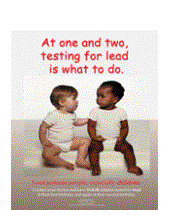
Mandatory Lead Testing
for
Children
Return to Table of Contents
The national goal to eliminate childhood lead poisoning by 2010 is a priority for the New York State Department of Health (NYSDOH).
Lead has long been recognized as the leading preventable environment health hazard for young children. Despite significant reductions in the incidence of childhood lead poisoning, thousands of children are identified with elevated blood levels each year in New York State. 1
In nearly all cases, children are exposed to lead by ingesting lead paint chips or by ingesting dust contaminated by deteriorating lead paint.
Less commonly, listed below are secondary sources that may contain lead and can be significant contributory sources:
- water contaminated by its flow through lead pipes or brass fixtures;
- soil contaminated by lead dust;
- certain consumer products;
- certain ethnic spices;
- foods; and
- cosmetics.
People in certain occupations who may come in contact with lead on the job and bring it home on their skin and clothes are:
- painters;
- plumbers;
- mechanics; or
- construction workers.
Hobbies that use lead, such as making pottery or stained glass, refinishing furniture, making lead figurines, using indoor firing ranges or loading homemade ammunitions can also be a source of exposure for young children.
NYS Public Health Law and Regulations mandate universal blood lead testing by health care providers of all children at or around age one and again at or around age two.
In addition, health care providers must assess, at least annually, all children from six months to six years of age for risk of exposure to lead and perform a blood test for lead if a risk is found.
For questions about lead exposure or lead testing, please contact your local health department or the NYS Department of Health Childhood Lead Poisoning Prevention Program at (518) 473-4602.
1Surveillance for Elevated Blood Levels Among Children --- United States, 1997 - 2001, MMWR, September 12, 2003 / 52(SS10); 1-21.
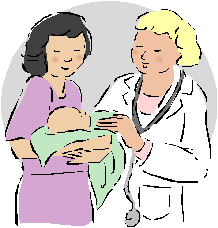
New EPSDT/CTHP Manual Available for Providers
Who Serve Youth from Birth to Age 21
Return to Table of Contents
According to the requirements and recommendations of the:
- Federal Early and Periodic Screening, Diagnosis and Treatment (EPSDT) program; and
- the New York State Child Teen Health Program (CTHP),
there is a new Medicaid provider health manual on the eMedNY website (http://www.emedny.org/ProviderManuals/index.html):
EPSDT CTHP Provider Manual For Child Health Plus A (Medicaid).
The Office of Medicaid Management is sharing this new EPSDT/CTHP Provider Manual with the provider types listed below to help you comprehensively address the health needs of children and adolescents.
- All Medicaid providers, particularly those that directly render or contract for primary health care services, such as:
- Physicians
- Nurse Practitioners
- Clinics
- Hospitals
- Nursing Homes
- Office of Mental Health Licensed Residential Treatment Facilities
- Office of Mental Retardation and Developmental Disability, Licensed
Intermediate Care Facilities for the Developmentally Disabled - Office of Children and Family Services licensed Child (Foster) Care Agencies
- All Medicaid Managed Care Organizations
- All Medicaid-enrolled School-Based Health Centers
ACCESSING THE EPSDT/CTHP PROVIDER MANUAL
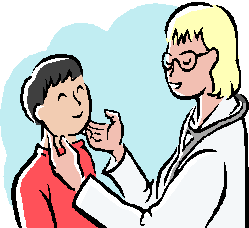
Providers can access the EPSDT/CTHP Provider Manual for Child Health Plus A (Medicaid) on the eMedNY website at http://www.emedny.org/ProviderManuals/index.html
This manual replaces and updates language in both the CTHP insert located in some MMIS provider manuals, and older EPSDT/CTHP policy language in other MMIS and eMedNY provider manuals.
There is a separate icon for the EPSDT/CTHP Provider Manual at the same web location with the other eMedNY provider manual icons. This was done to facilitate access to the manual by providers who, while not a youth's primary care provider, render health care services that are addressed in the Federal EPSDT and New York State CTHP requirements and recommendations. (Just to name a few examples: dentists, audiologists, and ophthalmologists).
The EPSDT/CTHP Provider Manual has also been placed in the "CONTENTS" section of the eMedNY provider manuals for those providers who are likely to be acting in a primary care capacity either long-term or transitionally.
CONTENT OF THE EPSDT/CTHP PROVIDER MANUAL
The EPSDT/CTHP care standards and periodicity schedule continue to follow the recommendations of the Committee on Standards of Child Health, American Academy of Pediatrics.
The recommendations of Bright Futures, sponsored by the U.S. Department of Health and Human Services, are also emphasized in the EPSDT/CTHP Provider Manual.
The EPSDT/CTHP Provider Manual communicates both EPSDT/CTHP requirements and health care recommendations.
For provider convenience, the manual summarizes the basic EPSDT/CTHP requirements and recommendations in a section titled, EPSDT/CTHP Summary.
In addition, the EPSDT/CTHP Provider Manual contains a wealth of prevention and treatment resource information. An overarching goal in developing this manual is to make it a living document, by directing providers to sources for future updates to the information presented in the manual.
The EPSDT/CTHP Provider Manual encourages providers to render primary health care services in the context of a medical home.
This is discussed in both the manual's Introduction and in Overview and Basic Concepts - The Medical Home.
The manual also contains a resource section, Resources for Practitioners and Families, which includes information on New York State and county-level programs and resources, and both Federal and Private Resources, including some provider-locator information. The Resource Section contains information on special health care programs and resources to aid providers serving general and special health needs populations.
Although there are many health care conditions/concerns and special needs youth populations addressed in the EPSDT/CTHP Provider Manual, some specific categories are emphasized. This special focus was judged important by the Department's Maternal & Child Health Program and Medicaid Program, for four reasons:
- Prevalence of a health care condition, or
- Prioritization of a health care concern in New York State, and/or
- The complexity of meeting the health care needs of a particular population, and
- A desire to facilitate improved prevention, early detection and/or comprehensive treatment efforts related to the health condition/concern, and/or special youth population category.
Some of the emphasized categories are:
- asthma
- diabetes
- nutrition
- oral health
- immunization
- lead poisoning
- HIV-AIDS
- mental and developmental health
- chemical dependency
- special needs of adolescents
- special needs and requirements for foster care youth
NOTE: The EPSDT/CTHP Provider Manual is NOT a billing manual.
For billing information, providers should access your specific eMedNY Provider Manual, and Medicaid Update articles.
For questions and comments on the EPSDT/CTHP Provider Manual, contact the Bureau of Maternal & Child Health at (518) 486-6562.
Providers desiring a hardcopy of the manual should print it from the eMedNY website.
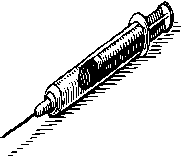
Billing Change for Xolair® (omalizumab)
Return to Table of Contents
Genentech, the maker of Xolair®, no longer offers the extended payment process for physicians (up to a 120 day payment lag for the purchase of Xolair), as referenced in the July 2004 Medicaid Update article, Medicaid Guidelines for the Administration of Xolair®.. Xolair® is now covered by Medicare Part B and will be covered by Medicare Part D, after January 1, 2006.
Xolair® is also reimbursable under Medicaid for those recipients without Medicare, when billed by the physician's office using the appropriate procedure code, J2357. It may be billed electronically and on paper. If the claim is submitted correctly, it should be paid within thirty days of receipt.
For questions regarding Medicaid billing of Xolair, you may contact the Bureau of Policy Development and Agency Relations at (518) 473-2160.

Payment for Bone Density Screening for Patients
Using Depo-Provera
Return to Table of Contents
The Food and Drug Administration (FDA) has issued a warning that there is a relationship between the use of Depo-Provera as a birth control method and bone loss, especially after use for two years or more.
Women who intend to use or have been using Depo-Provera and who are covered by Medicaid, including the Family Planning Benefit Program (FPBP), are eligible for bone density screenings as clinically appropriate.
To receive reimbursement for this procedure under Medicaid as a FPBP procedure, the "Family Planning Indicator Box" on the claim form must be checked "Yes", along with a diagnosis code from the V25 series. The patient's medical record should reflect that she is considering using or is currently using Depo-Provera.
Questions may be directed to the Bureau of Policy Development and Agency Relations at 518-473-2160.
Attention
Ambulette
Transportation
Providers!
January 2006
Annual Ambulette Survey
Information Required From Ambulette Providers
Return to Table of Contents
Providers of ambulette services are reminded that during January of each year they are required to submit vehicle information in accordance with Title 18 NYCRR 502.6(b):
Each provider of ambulette services must, during the month of January of each year, disclose to the department in writing the information concerning those vehicles currently owned or leased by the provider. The information to be disclosed must include at a minimum the name and address of the provider, each vehicle's license number and Department of Transportation identification number and a statement regarding whether the vehicle is owned or leased. A provider of ambulette services which fails to disclose this information will have its participation in the medical assistance program terminated.
The forms identifying the information to be disclosed and the return address will be included in the January 2006 Medicaid Update.
A response must be received by February 15, 2006. Providers that fail to disclose this information will be terminated from the medical assistance program.
It is recommended that these forms be submitted via certified mail, return receipt and a copy of both your submission and the proof of mailing be kept for your files. Proof of mailing must be provided by the provider in the event of non-receipt by the Department.

ELECTRONIC FUNDS TRANSFER
FOR PROVIDER PAYMENTS
Return to Table of Contents
Computer Sciences Corporation (CSC) is pleased to announce the availability of eMedNY Electronic Funds Transfer (EFT).
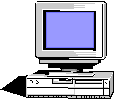


Providers who enroll in EFT will have their Medicaid payments directly deposited in their checking account.
Please note that EFT does not waive the two-week lag for releasing Medicaid disbursements.
Enroll in Electronic Funds Transfer
To enroll in EFT, providers must complete the EFT Provider Enrollment Form that can be found at :
http://www.emedny.org/info/ProviderEnrollment/index.html
Prior to completing the form, please carefully read the INSTRUCTIONS SHEET that can also be found at the above website and follow its directions.
- A defaced, original check from your checking account is required.
- Providers with multiple provider identification (ID) numbers must complete one application form for each ID and attach an original, defaced check to each application.
- EFT enrollment applications that do not conform to these instructions cannot be accepted.
After sending the EFT Provider Enrollment Form to CSC, please allow a minimum of six to eight weeks for processing.
During this period of time you should review your bank statement and look for an EFT transaction in the amount of $0.01, which CSC will submit as a test.
Your first real EFT transaction will take place approximately 10 days later!
If you have any questions about eMedNY EFT enrollment process, please call CSC Provider Services at (800) 343-9000.
Attention
All Providers!
Billing Requirements for Patients Eligible for
Both Medicare and Medicaid or Who May Have Other Insurance
Return to Table of Contents
Medicaid law and regulations require that, when a recipient is eligible for both Medicare and Medicaid or has other insurance benefits:
The provider must bill Medicare or the other insurance first for covered services prior to submitting a claim to Medicaid.
The Medicaid program is designed to provide payment for medical care and services only after all other resources available for payments have been exhausted; Medicaid is always payor of last resort. Providers must maximize all applicable insurance sources before submitting claims to Medicaid. When coverage is available, payment from other insurance sources must be received before submitting a Medicaid claim.
- If the service is covered, or the provider does not know if the service is covered by Medicare and/or other available insurance, the provider must first submit a claim to Medicare and/or other insurer.
- Only when you are certain that Medicare or another insurer does not cover the service, can you bill Medicaid solely, and not bill other insurer first.
It is important to maintain appropriate financial documentation supporting your determination of available resources, collection efforts and the receipt of funds, as well as their application. These records must be made available to authorized Department personnel for audit purposes.
If you have any questions concerning the above information, you may contact Paul Niedbalec, Office of Medicaid Management, Bureau of Medicaid Audit, at (518) 402-0075.
Attention
All Providers:
eMedny Training
Reminder!
Seminar Schedule and Registration
Return to Table of Contents

Computer Sciences Corporation (CSC) announces a schedule of seminars to be offered to providers and their billing staff.
Seminar locations and dates are available at the eMedNY website. Registration is fast and easy.
Go to http://www.emedny.org/training/index.aspx to register for the eMedNY Training Seminar appropriate for your provider category and location.
If you are unable to access the internet to register, please contact CSC's call center at (800) 343-9000, to obtain a registration form.
You may also request seminar schedule and registration information by contacting CSC's Fax on Demand at (800) 370-5809.
Please refer to these resources frequently for additional seminar offerings.
CSC representatives look forward to meeting with you at upcoming seminars!
Attention
All Providers!
HCPCS
Codes
2006 Healthcare Common Procedure Coding System
Is Released
Return to Table of Contents
For billing dates of service on and after January 1, 2006, all health care providers and plans must utilize the 2006 Healthcare Common Procedure Coding System (HCPCS) as released by the federal Centers for Medicare and Medicaid Services.
In early 2006, the revised Medicaid fee schedules (Version 2006 -1) will be posted on the eMedNY website, reflecting the coding changes along with fee and other information.
To assist providers in transitioning to the new code set, lists of new and discontinued HCPCS codes for each fee-for-service provider type will be posted in December 2005.
These lists will be located on each provider manual home page, via the provider communications link, at: http://www.emedny.org/providermanuals/index.html.
In addition, providers are advised to obtain the published codes for reference.
Coding resources which are available include:
- HCPCS Level I (CPT-4) procedure codes for physicians and other practitioners can be purchased in hard copy or electronic form through many publishing houses or from the American Medical Association at http://www.ama-assn.org, click on CPT Codes and Resources.
- HCPCS Level II (alpha-numeric) codes for other medical services are available in electronic version online at http://www.cms.hhs.gov/medicare/hcpcs/, and are also available through publishing houses.
- ICD-9 Diagnosis and Procedure codes (effective 10/1/2005) are available in electronic version online at http://www.cms.hhs.gov/medlearn/icd9code.asp, and are also available through publishing houses.
HCPCS and ICD-9 codes are not Medicaid specific. Providers must use the current code set when billing any health care payer.
Questions? Contact the Bureau of Medical Review and Payment at (518) 474-8161.
Fraud impacts all taxpayers.
Return to Table of Contents
Do you suspect that a recipient or a provider has engaged in fraudulent activities?
Please call:
1-877-87FRAUD
Reminder
All Providers!
DEPARTMENT ONSITE VISITS FOR
CREDENTIAL VERIFICATION REVIEWS
Return to Table of Contents
The Department of Health's Office of Medicaid Management periodically conducts onsite visits of a provider's place of business to ensure overall compliance with Medicaid regulations.
These visits, known as Credential Verification Reviews (CVRs), assess such areas as:
- provider and staff identification and credentialing
- physical attributes of the place of business
- recordkeeping protocols and procedures regarding Medicaid claiming.
CVRs are conducted for such sites as:
- physician and dental offices
- pharmacies
- durable medical equipment retailers, and
- part time clinics.
We do not perform CVRs at hospitals, nursing homes, etc.
Every effort is made to conduct these visits in a professional and non-obtrusive manner.
Investigators conducting these reviews will have a letter of introduction signed by the Regional Director for the Bureau of Investigations & Enforcement and a photo identification card.
Should providers or their staff have questions regarding these reviews, they can contact:
for Rockland, Westchester, Nassau, Suffolk Counties and New York City
John DeSantis, Regional Director
Metropolitan Area Regional Office
(212) 383-4681
for all upstate counties
Paul Scannevin, Upstate Regional Director
(518) 474-4911.
This article replaces the same article that was published in the September 2005 Medicaid Update
In that article, under item #2 below,
it was stated that "...enrollees should be referred ...to a participating dentist."
This referral is not necessary, and has been deleted from this article.
DENTAL SERVICES FOR MEDICAID
MANAGED CARE ENROLLEES
Return to Table of Contents
Clarification For Fee-For-Service Dental Providers
Medicaid fee-for-service dental providers will not be reimbursed for services provided to the following Medicaid managed care enrollees:
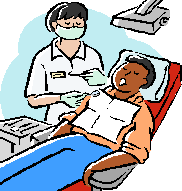
- Medicaid managed care enrollees whose plan provides dental benefits (unless the provider participates in the health plan's dental network or has a valid referral from the enrollee's primary care provider).
These enrollees should be referred by their health plan to a participating dentist. Eligibility status for these enrollees will appear as follows:- Phone message: "Eligible PCP" or "Eligible capitation guarantee"
"Dental" is spoken in the list of covered services - Verifone message: "Managed care coordinator" or "Other or additional payer"
A "J" is listed under "Plan code" - ePACES message: "Managed care coordinator" or "Other or additional payer"
A "J" is listed under "Carrier Code"
- Phone message: "Eligible PCP" or "Eligible capitation guarantee"
- Medicaid managed care enrollees who are in their guarantee period and whose plan does not provide dental benefits.
Eligibility status for these enrollees will appear as follows:- Phone message: "Eligible capitation guarantee"
"Dental" is not spoken in the list of covered services - Verifone message: "Other or additional payer"
No "J" is listed under "Plan code" - ePACES message: "Other or additional payer"
No "J" is listed under "Carrier Code"
- Phone message: "Eligible capitation guarantee"
When a Medicaid beneficiary joins a Medicaid managed care plan, that individual is guaranteed eligibility in the plan for a six-month period, beginning at the date of enrollment, even if the individual loses eligibility for Medicaid benefits during that time period.
Thus, when an enrollee loses Medicaid eligibility during their first six months of enrollment in a Medicaid managed care plan, that individual is in "guarantee" status.
A person in their guarantee period is eligible for only those services provided by the Medicaid managed care plan, and is not eligible for "carved-out" services or any other services provided on a fee-for-service basis (with the exception of family planning and pharmacy services).
Therefore, an enrollee in a guarantee period whose plan does not cover dental benefits is not eligible for dental care provided on a fee-for-service basis.
Providers should check the eligibility status of each Medicaid beneficiary before providing services to ensure that claims will be paid.
Questions? Please contact the Office of Managed Care at (518) 473-0122.
New eMedNY Help Desk
Hours of Operation
Return to Table of Contents
Effective January 1, 2006, the eMedNY Help Desk will be available during the following times:
For provider inquiries pertaining to non-pharmacy billing or claims, or provider enrollment:
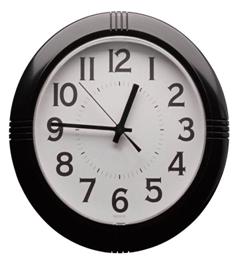
7:30 a.m. - 6:00 p.m., Eastern Time,
Monday through Friday
(excluding holidays)
For provider inquiries pertaining to eligibility,
service authorizations, DVS,
and Pharmacy Claims:
7:00 a.m. - 10:00 p.m., Eastern Time,
Monday through Friday
(excluding holidays)
Weekends and Holidays
8:30 a.m. - 5:30 p.m., Eastern Time
Questions? Please contact CSC Provider Services at (800) 343-9000.
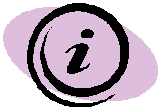
PROVIDER SERVICES
Return to Table of Contents
Missing Issues?
The Medicaid Update, now indexed by subject area, can be accessed online at the New York State Department of Health website:
http://www.health_care/medicaid/program/update/main.htm
Hard copies can be obtained upon request by calling (518) 474-9219.
Would You Like Future Updates Emailed To You?
Please email your request, along with your provider identification number to, MedicaidUpdate@health.state.ny.us
Let us know if you'd like to continue receiving the hardcopy along with the email version.
Do You Suspect Fraud?
If you suspect that a recipient or a provider has engaged in fraudulent activities, please call the fraud hotline at: 1-877-87FRAUD. Your call will remain confidential.
As a Pharmacist, Where Can I Access the List of Medicaid Reimbursable Drugs?
The list of Medicaid reimbursable drugs is available at: http://www.eMedNY.org/info/formfile.html
Questions About an Article?
For your convenience each article contains a contact number for further information, questions or comments.
Do You Want Information On Patient Educational Tools and Medicaid's Disease Management Initiatives?
Contact Department staff at (518) 474-9219.
Questions About HIPAA?
Please contact CSC Provider Services at (800) 343-9000.
Address Change?
Questions should be directed to CSC at (800) 343-900, option 5.
Fee-for-service Provider Enrollment
A change of address form is available at:
http://www.emedny.org/info/ProviderEnrollment/Provider%20Maintenance%20Forms/6101-Address%20Change%20Form.pdf.
Rate-based/Institutional Provider Enrollment
A change of address form is available at:
http://www.emedny.org/info/ProviderEnrollment/Provider%20Maintenance%20Forms/6106-Rate%20Based%20Change%20of%20Address%20Form.pdf
Billing Question? Call Computer Sciences Corporation:
Provider Services (800) 343-9000.
Comments and Suggestions Regarding This Publication?
Please contact the editor, Timothy Perry-Coon at MedicaidUpdate@health.state.ny.us or via telephone at (518) 474-9219 with your concerns.
The Medicaid Update: Your Window Into The Medicaid Program
The State Department of Health welcomes your comments or suggestions regarding the Medicaid Update.
Please send suggestions to the editor, Timothy Perry-Coon:
NYS Department of Health
Office of Medicaid Management
Bureau of Program Guidance
99 Washington Ave., Suite 720
Albany, NY 12210
(e-mail MedicaidUpdate@health.state.ny.us)
The Medicaid Update, along with past issues of the Medicaid Update, can be accessed online at the New York State Department of Health web site:http://www.health_care/medicaid/program/update/main.htm">